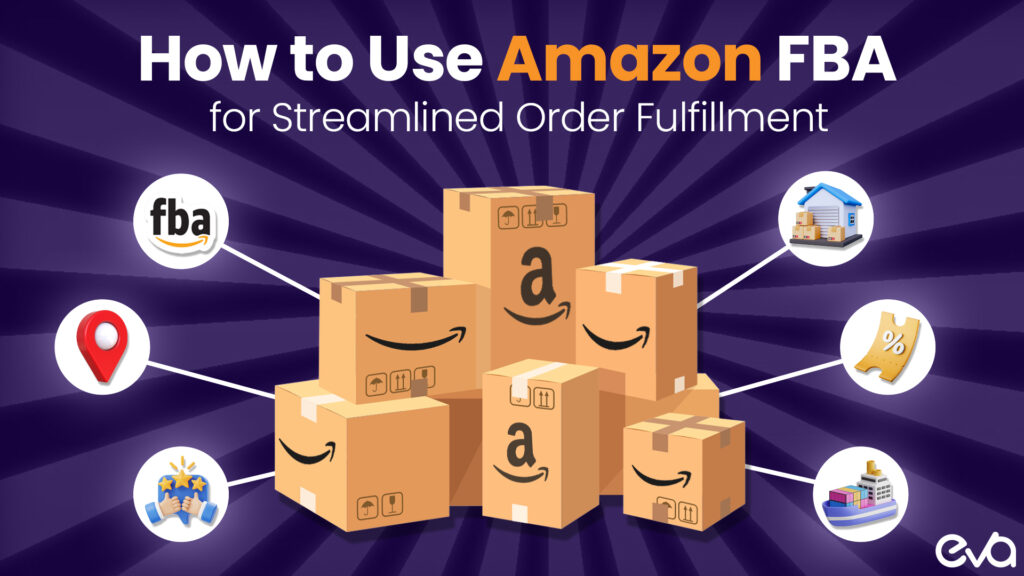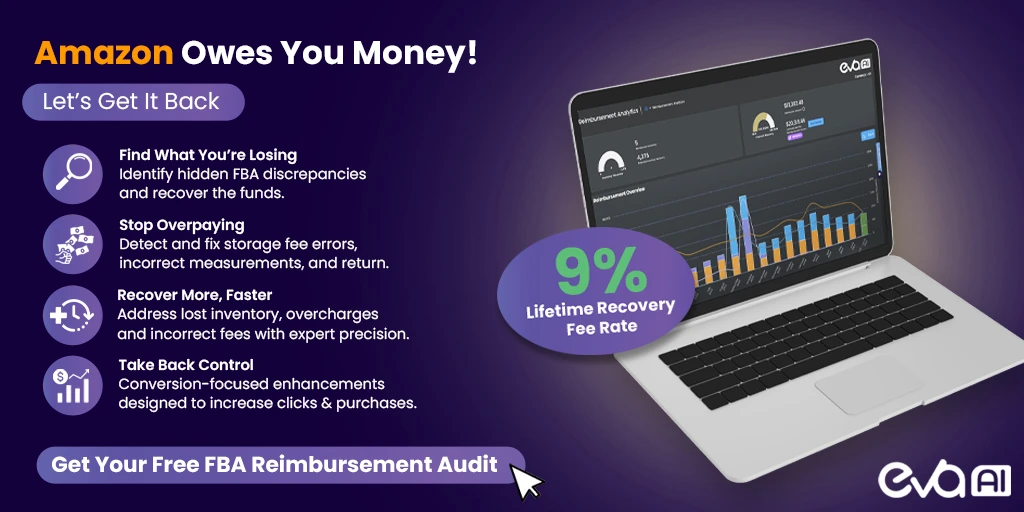Table of Contents
- Introduction
- Amazon Fulfillment Methods: FBA vs. MFN
- Key Benefits of Amazon FBA
- Exploring Merchant Fulfilled Network (MFN)
- Order Management for Amazon Sellers
- Using the Manage Orders Tool
- Handling Amazon Order Returns
- Cancelling an Amazon Order
- Using Buyer-Seller Messaging
- Resolving Issues Through Messaging
- How Eva Can Help You Manage Your Amazon FBA Budget
- Tips for Success
- Conclusion
- FAQs
Introduction
Amazon FBA, or Fulfillment by Amazon, is a service that allows sellers to store their products in Amazon’s fulfillment centers.
Once an order is placed, Amazon handles the packing, shipping, and even customer service on behalf of the seller.
This service has revolutionized how businesses handle logistics, especially for those who sell on Amazon’s marketplace.
Amazon offers two primary fulfillment methods: Fulfillment by Amazon (FBA) and Merchant Fulfilled Network (MFN).
While both methods enable sellers to get their products into the hands of customers, they differ significantly in terms of responsibilities, costs, and benefits.
Streamlining order fulfillment is crucial for any business aiming to scale effectively. Efficient order fulfillment ensures that customers receive their orders promptly, leading to higher customer satisfaction and repeat business.
This blog post will dive deep into the details of Amazon FBA, compare it with MFN, and explore how it can be leveraged for streamlined order fulfillment.
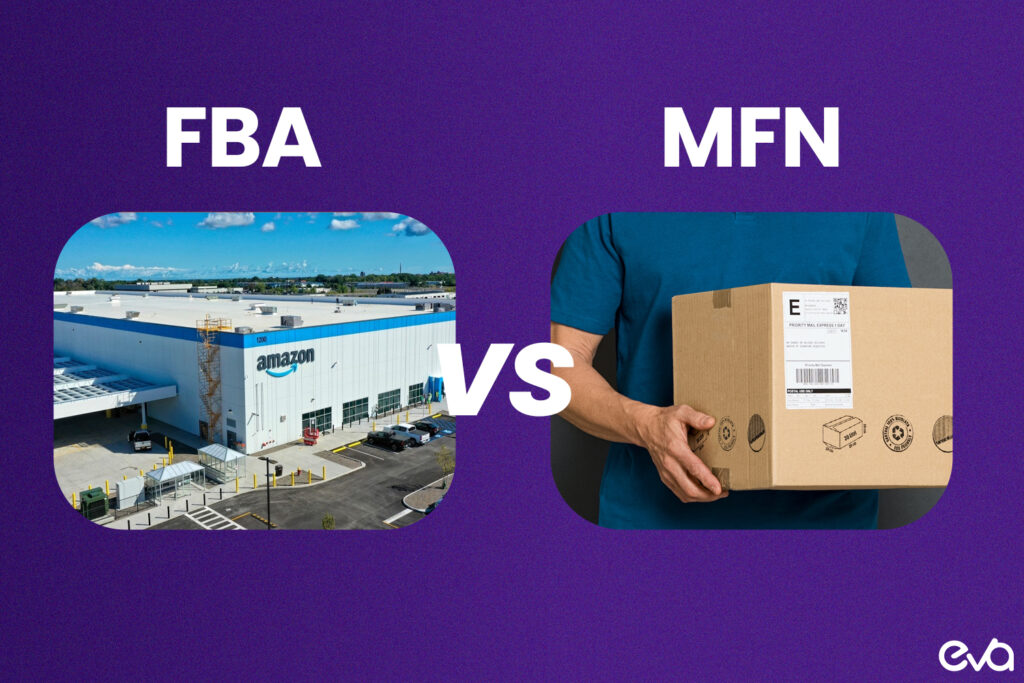
Amazon Fulfillment Methods: FBA vs. MFN
What is Amazon FBA?
Fulfillment by Amazon (FBA) is a service offered by Amazon that allows sellers to outsource the logistics of order fulfillment to Amazon. Here’s how it works:
- Inventory Storage: Sellers send their inventory to Amazon’s fulfillment centers, where it is stored securely until an order is placed. This means sellers don’t need to worry about storage space, climate control, or warehouse management.
- Order Processing: When a customer places an order, Amazon takes care of picking, packing, and shipping the product. The entire process is automated and designed for efficiency, ensuring that orders are processed quickly.
- Customer Service and Returns: Amazon also handles customer service inquiries and returns, providing a seamless experience for the customer. This reduces the workload on the seller and ensures that returns are managed according to Amazon’s policies.
FBA is particularly beneficial for businesses that want to scale rapidly, as it allows them to leverage Amazon’s vast logistics network without having to build one from scratch.
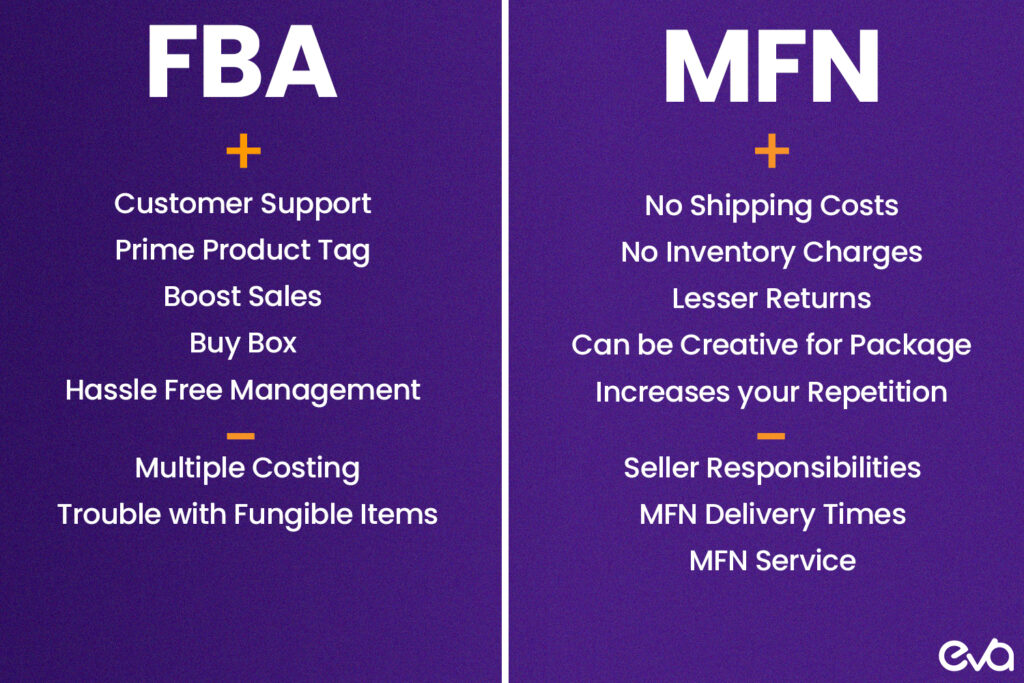
What is Merchant Fulfilled Network (MFN)?
The Merchant Fulfilled Network (MFN), also known as Fulfillment by Merchant (FBM), is the alternative to FBA.
In this model, sellers handle all aspects of order fulfillment themselves. This includes storing inventory, processing orders, shipping products, and managing customer service and returns.
Here’s how MFN differs from FBA:
- Inventory Management: Sellers must manage their own inventory, including warehousing, stock levels, and storage conditions. This can be challenging, especially for businesses with large or seasonal inventories.
- Order Fulfillment: Sellers are responsible for packing and shipping products directly to customers. This requires a reliable shipping solution and can involve additional labor costs.
- Customer Service: Unlike FBA, where Amazon handles customer service, MFN sellers must manage all customer interactions, including inquiries, complaints, and returns.
MFN offers more control over the fulfillment process, which can be advantageous for sellers who want to maintain a direct relationship with their customers or who have specific packaging and shipping requirements.
Pros and Cons
Both FBA and MFN have their advantages and disadvantages. Here’s a comparison to help sellers choose the right method:
| Criteria | FBA | MFN |
| Control | Less control over the fulfillment process | Full control over fulfillment, shipping, and customer service |
| Costs | Higher fees (storage, fulfillment, returns) | Lower upfront costs, but potentially higher shipping costs |
| Scalability | Easily scalable with Amazon’s logistics network | More challenging to scale, requires investment in infrastructure |
| Customer Experience | Amazon handles customer service, fast shipping, easy returns | Direct customer interaction, customizable packaging options |
| Storage | Amazon manages storage and inventory | Sellers must find and manage their own storage solutions |
| Returns | Amazon handles returns, reducing seller workload | Sellers manage returns, which can be labor-intensive |
FBA is ideal for sellers who prioritize scalability, fast shipping, and minimal logistics management. In contrast, MFN is better suited for sellers who value control over their fulfillment process and want to minimize fees.
Key Benefits of Amazon FBA
How FBA Enhances Sales
One of the most significant advantages of using Amazon FBA is its ability to boost sales. Sellers who use FBA often see increased sales for several reasons:
- Prime Eligibility: Products fulfilled through FBA are automatically eligible for Amazon Prime. This means they are available for free two-day shipping to millions of Prime members, significantly increasing the likelihood of a sale. Prime members are known to spend more and shop more frequently, making Prime eligibility a powerful tool for boosting sales.
- Buy Box Advantage: The Amazon Buy Box is the white box on a product detail page where customers can add items to their cart. Winning the Buy Box is crucial as it significantly increases the chances of making a sale. FBA products are more likely to win the Buy Box due to Amazon’s preference for items that offer quick, reliable shipping and customer service.
- Improved Seller Ratings: FBA can enhance a seller’s ratings and feedback scores. Since Amazon handles shipping, customer service, and returns, the chances of negative feedback due to late shipments or poor customer service are reduced. High ratings and positive feedback further increase a seller’s visibility and credibility on the platform.
- Global Reach: With FBA, sellers can reach international markets without worrying about the complexities of cross-border logistics. Amazon’s Global Selling program allows FBA sellers to list their products on Amazon’s international marketplaces, expanding their customer base and increasing sales potential.
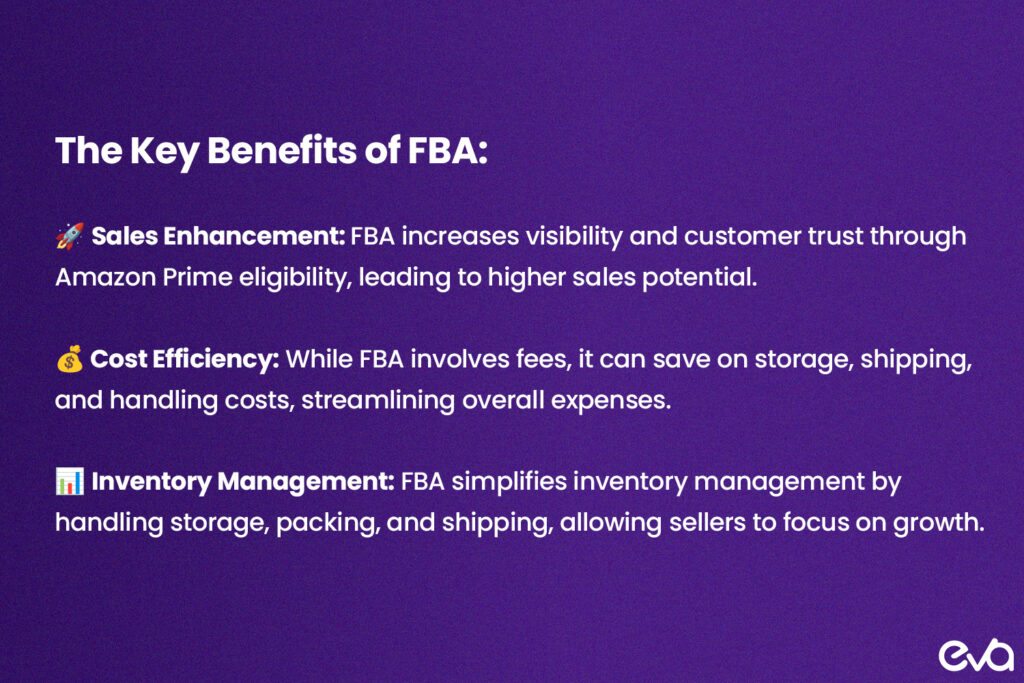
Cost and Efficiency
Using FBA can also lead to significant cost savings and increased efficiency in several areas:
- Reduced Shipping Costs: Amazon has negotiated discounted shipping rates with major carriers, which are passed on to FBA sellers. This can be especially beneficial for sellers with high shipping volumes, as it lowers the overall cost per shipment.
- No Need for Warehousing: FBA eliminates the need for sellers to rent or maintain their own warehouse space. This not only saves on rent but also on utilities, labor, and other associated costs. Amazon’s fulfillment centers are strategically located to ensure quick delivery to customers, further reducing shipping times and costs.
- Economies of Scale: By using Amazon’s massive logistics network, FBA sellers can benefit from economies of scale that would be difficult to achieve independently. This includes lower costs for packaging materials, shipping, and even customer service.
- Time Savings: FBA allows sellers to focus on other aspects of their business, such as product development, marketing, and customer engagement. With Amazon handling the logistics, sellers can spend less time on order fulfillment and more time growing their business.
Managing Inventory and Returns
Inventory management and returns handling are two areas where FBA excels, making life easier for sellers:
- Simplified Inventory Management: FBA’s inventory management system is integrated with Amazon’s seller platform, providing real-time inventory tracking. Sellers can easily monitor stock levels, set up automatic replenishment alerts, and manage inventory across multiple fulfillment centers. This reduces the risk of stockouts and ensures that products are always available for purchase.
- Automated Returns Processing: Handling returns can be time-consuming and costly. With FBA, Amazon manages the entire returns process, including customer service, inspection, and restocking of returned items. This not only saves sellers time but also ensures that customers have a hassle-free returns experience, leading to higher satisfaction and repeat purchases.
- Storage Flexibility: FBA offers flexible storage options, allowing sellers to store as much or as little inventory as needed. This is particularly beneficial for seasonal businesses that experience fluctuating demand. Sellers can adjust their inventory levels based on sales trends without worrying about storage constraints.
Exploring Merchant Fulfilled Network (MFN)
How MFN Works
The Merchant Fulfilled Network (MFN), also known as Fulfillment by Merchant (FBM), is an alternative to FBA where sellers take full responsibility for fulfilling their orders. Here’s how the MFN process works:
- Inventory Storage: Sellers store their inventory in their own facilities, which could be a warehouse, storage unit, or even a home office. This gives sellers complete control over their stock but also requires them to manage storage space and conditions.
- Order Processing: When an order is placed, the seller is responsible for picking, packing, and shipping the product directly to the customer. This involves selecting the right packaging, printing shipping labels, and ensuring the package is dispatched promptly.
- Shipping: Sellers choose their preferred shipping carriers and methods. This allows for more flexibility in shipping options but also means sellers need to negotiate rates and manage shipping logistics themselves.
- Customer Service and Returns: Sellers handle all customer service inquiries, including those related to shipping, product issues, and returns. This requires a dedicated customer service team and clear policies to manage customer expectations.
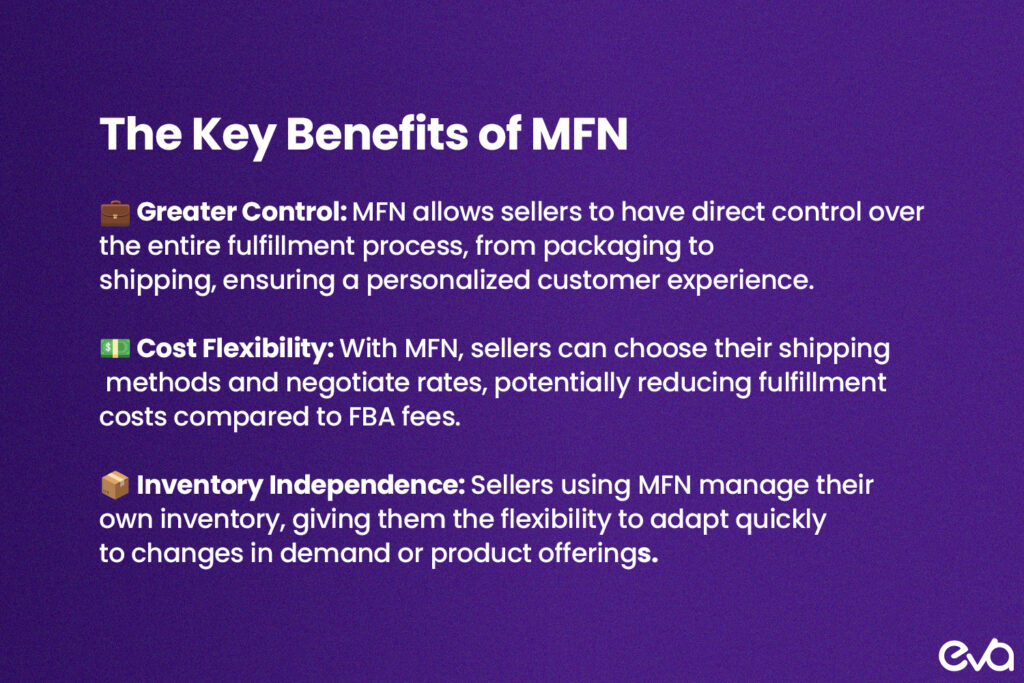
When MFN is Beneficial
While FBA offers many advantages, there are scenarios where MFN may be the better choice:
- Unique or Custom Products: Sellers offering custom, handmade, or one-of-a-kind products may prefer MFN to maintain control over the fulfillment process. This ensures that each item is carefully handled and packaged according to the seller’s specifications.
- Heavy or Bulky Items: Shipping heavy or bulky items through FBA can be expensive due to high storage and fulfillment fees. MFN allows sellers to use alternative shipping methods or local delivery services that may be more cost-effective.
- High-Margin Products: For products with high profit margins, the additional costs of FBA fees may not justify the convenience. Sellers can maximize their profits by handling fulfillment themselves, particularly if they have the infrastructure in place to do so efficiently.
- Seasonal Businesses: Sellers with seasonal products or fluctuating inventory levels might prefer MFN to avoid the long-term storage fees associated with FBA. MFN allows sellers to scale their operations up or down based on demand without incurring additional costs.
Challenges and Solutions
MFN comes with its own set of challenges, but these can be managed with the right strategies:
- Inventory Management: Keeping track of inventory levels can be challenging, especially for sellers with multiple SKUs. Investing in inventory management software can help automate this process and reduce the risk of overselling or stockouts.
- Shipping Logistics: Coordinating shipping for multiple orders can be time-consuming and prone to errors. Sellers can streamline this process by partnering with reliable carriers and using shipping software that integrates with their selling platform.
- Customer Service: Managing customer service requires time and resources, particularly for high-volume sellers. Outsourcing customer service or using automated systems for common inquiries can help reduce the workload.
- Returns Handling: Processing returns can be complex and costly. Establishing clear return policies and using return management software can help streamline the process and minimize the impact on your bottom line.
Order Management for Amazon Sellers
Importance of Efficient Order Management
Efficient order management is critical to the success of any Amazon business. It involves the entire process from the moment an order is placed to the time it is delivered to the customer.
Effective order management can:
- Improve Customer Satisfaction: Quick and accurate order fulfillment leads to higher customer satisfaction, which in turn drives repeat business and positive reviews. Customers expect timely deliveries and will likely return if their experience is seamless.
- Reduce Errors: Streamlined order management processes minimize the chances of errors, such as shipping the wrong item or delivering to the wrong address. Reducing errors not only saves costs but also prevents negative feedback and returns.
- Increase Efficiency: Efficient order management allows sellers to process orders faster, freeing up time and resources for other business activities. It can also help manage peak periods, such as holidays, more effectively.
- Enhance Inventory Control: Good order management is closely tied to inventory management. Keeping track of stock levels and sales trends helps sellers maintain optimal inventory levels, reducing the risk of stockouts or overstocking.
Amazon Tools for Order Management
Amazon provides several tools to help sellers manage their orders efficiently:
- Manage Orders Tool: This is Amazon’s primary tool for order management. It provides a comprehensive view of all orders, including those that are pending, shipped, or returned. Sellers can use this tool to print packing slips, confirm shipments, and communicate with customers.
- Inventory Reports: These reports give sellers detailed insights into their inventory levels, including items that are low in stock or have high return rates. Regularly reviewing these reports helps sellers stay on top of inventory and avoid stockouts.
- Order Defect Rate (ODR) Dashboard: The ODR dashboard provides metrics on order defects, such as negative feedback, A-to-Z claims, and chargebacks. Monitoring these metrics helps sellers identify and address issues that could impact their seller performance ratings.
- Third-Party Order Management Tools: There are several third-party tools available that integrate with Amazon’s seller platform to provide enhanced order management capabilities. These tools offer features like bulk order processing, automated shipping label printing, and advanced inventory management.
Using the Manage Orders Tool
How to Use the Tool
The Manage Orders Tool is essential for Amazon sellers to efficiently process and track their orders. Here’s a step-by-step guide to navigating and utilizing the tool:
- Accessing the Tool: Log in to your Amazon Seller Central account and navigate to the “Orders” tab. From there, select “Manage Orders” to view all current orders.
- Order Overview: The main page of the Manage Orders tool displays all orders, including pending, shipped, and canceled orders. You can filter orders by date, status, or fulfillment method to easily find specific orders.
- Order Details: Click on an order number to view detailed information about that order, including the customer’s shipping address, payment status, and items ordered. This page also allows you to print packing slips and generate shipping labels.
- Confirming Shipment: Once an order is packed and ready to ship, use the “Confirm Shipment” button to update the order status. You can enter tracking information here, which will be sent to the customer automatically.
- Communication: The tool allows you to contact customers directly if there are issues with their orders. You can send messages to clarify shipping details, request additional information, or resolve problems.
- Order Reports: You can download order reports to analyze trends, track performance, and manage large volumes of orders. These reports can be customized to include specific data points, such as order dates, shipping times, and return rates.
Troubleshooting
Despite its user-friendly design, sellers may encounter issues when using the Manage Orders Tool. Here are some common problems and how to resolve them:
- Missing Orders: If an order doesn’t appear in the tool, it may be due to a filter setting. Check the date range and status filters to ensure all orders are visible. If the problem persists, contact Amazon Seller Support.
- Incorrect Shipping Address: If the shipping address provided by the customer is incorrect, you can contact the customer through the tool to request an updated address. Be sure to update the order details before confirming the shipment.
- Tracking Number Issues: If you’re unable to generate a tracking number, ensure that you’re using a supported carrier and that the order is eligible for tracking. If issues continue, try reentering the shipping information or reach out to Amazon support for assistance.
- Delayed Order Confirmation: Delays in confirming orders can lead to penalties. If you’re experiencing system issues that prevent timely confirmation, document the issue and report it to Amazon Seller Support to avoid penalties.
Handling Amazon Order Returns
Managing Returns with Amazon FBA
Returns are an inevitable part of any e-commerce business, but Amazon FBA makes managing returns significantly easier. Here’s how FBA handles returns for you:
- Automated Return Process: When a customer initiates a return, Amazon processes it automatically. The customer receives a prepaid return label and instructions on how to send the item back to Amazon’s fulfillment center.
- Inspection and Restocking: Once the returned item is received, Amazon inspects it to determine whether it can be resold. If the item is in good condition, it is restocked in your inventory. If it’s damaged, Amazon may dispose of it or send it back to you, depending on your settings.
- Refund Processing: Amazon handles the refund process, crediting the customer’s account as soon as the return is processed. This reduces the workload on the seller and ensures that refunds are issued promptly.
- Return Reports: FBA provides detailed reports on returns, including reasons for returns, refund amounts, and the condition of returned items. Analyzing these reports can help sellers identify trends and address common issues that lead to returns.
Authorizing and Processing Returns
For MFN sellers or specific cases where manual intervention is required, here’s how to authorize and process returns:
- Return Authorization: When a customer requests a return, review the reason for the return and authorize it if it meets your return policy criteria. You can send the customer a return authorization number (RMA) and a prepaid return label if applicable.
- Receiving the Return: Once the item is returned, inspect it to determine whether it can be restocked. If the item is in good condition, return it to your inventory. If it’s damaged, decide whether to dispose of it, repair it, or return it to the manufacturer.
- Processing the Refund: Issue a refund to the customer based on your return policy. Ensure that the refund amount is accurate and reflects any restocking fees or shipping charges, if applicable.
- Record Keeping: Keep detailed records of all returns, including the reason for the return, the condition of the returned item, and the refund amount. This information is valuable for identifying patterns and improving your products or customer service.
Cancelling an Amazon Order
How to Cancel an Order
Order cancellations can sometimes be necessary, whether due to stock issues, shipping delays, or customer requests. Here’s how to properly cancel an order on Amazon:
- Access the Order: In the Manage Orders tool, locate the order you need to cancel. Click on the order number to view the order details.
- Initiate Cancellation: Click on the “Cancel Order” button. You’ll be prompted to select a reason for the cancellation, such as “Out of Stock,” “Customer Request,” or “Shipping Delay.”
- Confirm Cancellation: After selecting the cancellation reason, confirm the cancellation. The customer will be notified automatically, and any payment will be refunded.
- Update Inventory: If the cancellation was due to a stock issue, update your inventory levels to prevent future stockouts. Consider using inventory management software to avoid overselling.
Customer Communication
Effective communication with customers is crucial when canceling orders. Here’s how to handle cancellations professionally:
- Immediate Notification: As soon as you know an order needs to be canceled, notify the customer. Use clear and concise language to explain the reason for the cancellation and apologize for any inconvenience caused.
- Offer Alternatives: If possible, suggest alternative products or provide a timeline for when the item will be back in stock. This shows that you value the customer’s business and are willing to go the extra mile to satisfy them.
- Provide a Refund: Ensure that the refund process is initiated promptly and that the customer is informed of when they can expect the refund to appear in their account.
- Follow-Up: After the cancellation, consider following up with the customer to ensure their issue was resolved to their satisfaction. This extra step can help maintain a positive relationship and encourage future purchases.
Using Buyer-Seller Messaging
How to Use Messaging Effectively
Buyer-Seller Messaging on Amazon is a powerful tool for maintaining customer satisfaction and resolving issues. Here’s how to use it effectively:
- Prompt Responses: Respond to customer inquiries as quickly as possible. Amazon recommends responding within 24 hours, but the sooner, the better. Prompt responses show that you value the customer’s time and are committed to providing excellent service.
- Clear and Polite Communication: Always communicate clearly and politely. Use simple language, avoid jargon, and be direct in addressing the customer’s concerns. If the issue is complex, break it down into manageable steps.
- Personalization: Personalize your messages by using the customer’s name and referencing their order details. This creates a more personal connection and shows that you’ve taken the time to understand their issue.
- Documenting Conversations: Keep a record of all communications with customers. This can be helpful if there are disputes or if you need to reference previous interactions in future communications.
Resolving Issues Through Messaging
Buyer-Seller Messaging can also be used to resolve order-related issues, such as:
- Order Delays: If an order is delayed, notify the customer immediately and provide an updated delivery date. Offer to expedite shipping or provide a discount on future purchases as a goodwill gesture.
- Product Issues: If a customer receives a damaged or defective product, apologize and offer a solution, such as a replacement or refund. Use messaging to guide the customer through the return process and ensure they feel supported.
- Negative Feedback: If a customer leaves negative feedback, reach out to them through Buyer-Seller Messaging to understand their concerns. Offer to resolve the issue and, if appropriate, politely ask if they would consider updating or removing the negative feedback once the issue is resolved.
- Special Requests: Some customers may have special requests, such as gift wrapping or specific shipping instructions. Use messaging to confirm these requests and ensure they are fulfilled to the customer’s satisfaction.
How Eva Can Help You Manage Your Amazon FBA Budget
At Eva, we help Amazon sellers maximize their FBA profitability through advanced tools and insights.
Our pricing and inventory management features keep your business competitive and efficient, while our cost tracking and revenue analysis tools enable you to make smart decisions that boost your bottom line.
With Eva, you can automate the day-to-day tasks of managing your FBA business, allowing you to focus on growth and expansion.
Overview of Eva’s Tools
Eva is a platform built to assist Amazon sellers in managing their FBA budgets efficiently. It provides a variety of tools aimed at reducing costs, optimizing pricing, and improving profitability. Here’s how Eva’s tools can support your FBA business:
- Pricing Adjustments: Eva’s pricing tool adjusts your product prices automatically based on current market conditions, competition, and profit goals. This automation helps you remain competitive while maximizing profits without the need for constant manual updates.
- Expense Tracking: Keeping an eye on every cost is crucial for maintaining healthy profit margins. Eva offers detailed tracking of expenses related to your FBA business, including storage fees, fulfillment costs, and shipping charges. This allows you to spot areas where costs can be cut and margins improved.
- Inventory Oversight: Proper stock management is key to avoiding both stockouts and excess inventory, which can be costly. Eva’s inventory management features help you maintain the right stock levels to meet demand without incurring unnecessary storage fees.
- Revenue Analysis: Eva’s tools analyze your sales data to uncover patterns and opportunities for growth. By understanding which products are performing well and which need improvement, you can make informed decisions about inventory and pricing strategies, ensuring your business remains profitable.
Key Benefits
Using Eva offers several advantages for managing your Amazon FBA budget:
- Cost Reduction: By automating pricing and inventory management, Eva helps you cut unnecessary costs and improve profit margins. This is especially useful for sellers with large inventories or complex product lines where manual management could be both time-consuming and error-prone.
- Time Efficiency: Eva handles many of the routine tasks involved in managing an FBA business, such as adjusting prices and monitoring inventory. This frees up your time to focus on other important areas of your business, like product development and marketing.
- Data-Driven Insights: Eva provides analytics and insights that help you make informed decisions about your business. Whether adjusting prices, managing inventory, or planning for future growth, Eva equips you with the tools needed to succeed.
- Scalability: As your business grows, Eva grows with you. Its tools are designed to manage the complexities of larger operations, making it easier to handle multiple SKUs, marketplaces, and international sales.
Tips for Success
To optimize your order fulfillment with Amazon FBA, consider the following tips:
- Monitor Inventory Regularly: Keep a close eye on your inventory levels and set up automatic alerts for low stock items. This ensures that you’re always prepared to meet customer demand.
- Optimize Product Listings: Well-optimized product listings with high-quality images, clear descriptions, and relevant keywords can improve visibility and sales on Amazon.
- Use Amazon’s Tools: Take full advantage of Amazon’s seller tools, such as the Manage Orders Tool and Inventory Reports, to streamline your operations and improve efficiency.
- Stay Competitive: Regularly review your pricing strategy and adjust as needed to stay competitive in the marketplace. Consider using dynamic pricing tools like Eva to automate this process.
Conclusion
Recap of Amazon FBA’s Benefits
Amazon FBA provides a wide range of advantages for sellers aiming to streamline their order fulfillment.
By automating logistics and customer service, FBA allows you to focus on other critical aspects of your business.
Additionally, with access to Amazon’s extensive network of Prime customers, your products can reach a broader audience, leading to increased sales and greater operational efficiency.
Final Thoughts
Using Amazon FBA is an effective strategy to grow your business and ensure that customers receive their orders promptly and reliably.
Whether you’re a small business just starting or an established seller seeking to scale, FBA offers the tools and infrastructure necessary for success in e-commerce.
By integrating FBA with strategies like automated pricing and smart inventory management, you can enhance your profitability and build a thriving Amazon business.
FAQs
FBA fees include charges for fulfillment, storage, and optional services like labeling and repackaging. These costs can vary depending on factors such as the size, weight, and storage duration of your products.
Yes, you can use both FBA and MFN for different products or even the same product. This flexibility allows you to take advantage of the strengths of each method depending on your specific needs and market conditions.
Amazon’s Global Selling program enables FBA sellers to fulfill orders across multiple countries. You have the option to store inventory in Amazon’s international fulfillment centers or to ship directly from your home country.
If your inventory remains unsold in Amazon’s warehouses for more than 365 days, it will incur long-term storage fees. To avoid these charges, you might consider running promotions, reducing prices, or removing the inventory.
No, Amazon FBA does not allow for customized packaging, as products are shipped using standard Amazon packaging. If customized packaging is important for your brand, you might consider using MFN to retain control over the packaging process.

